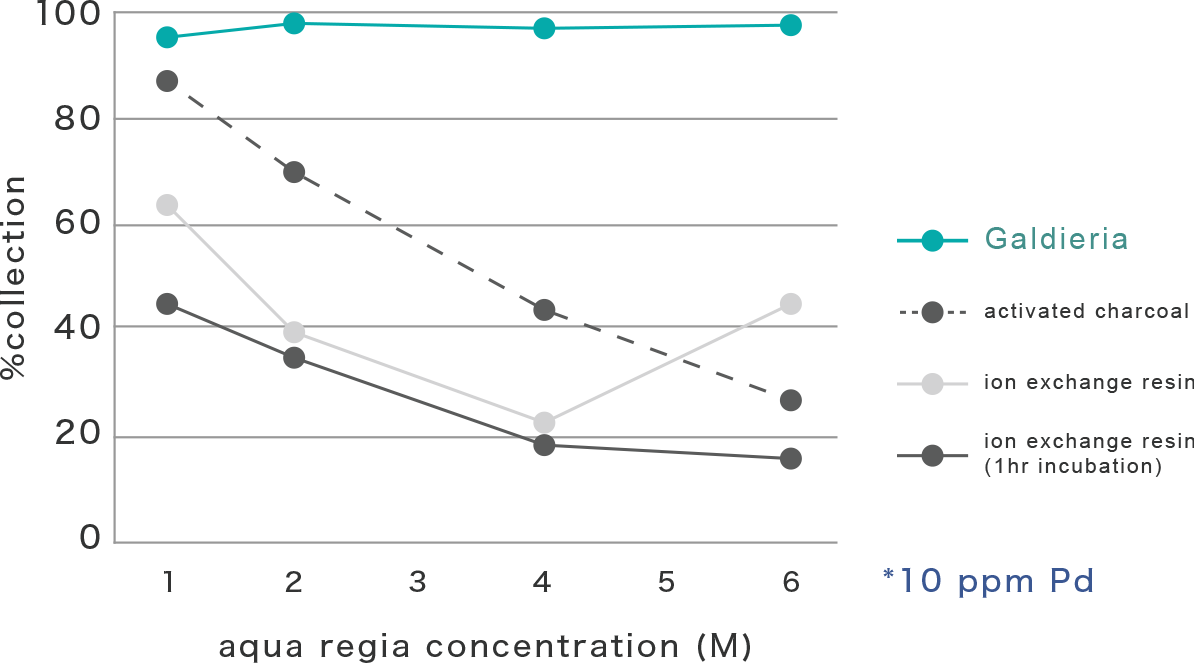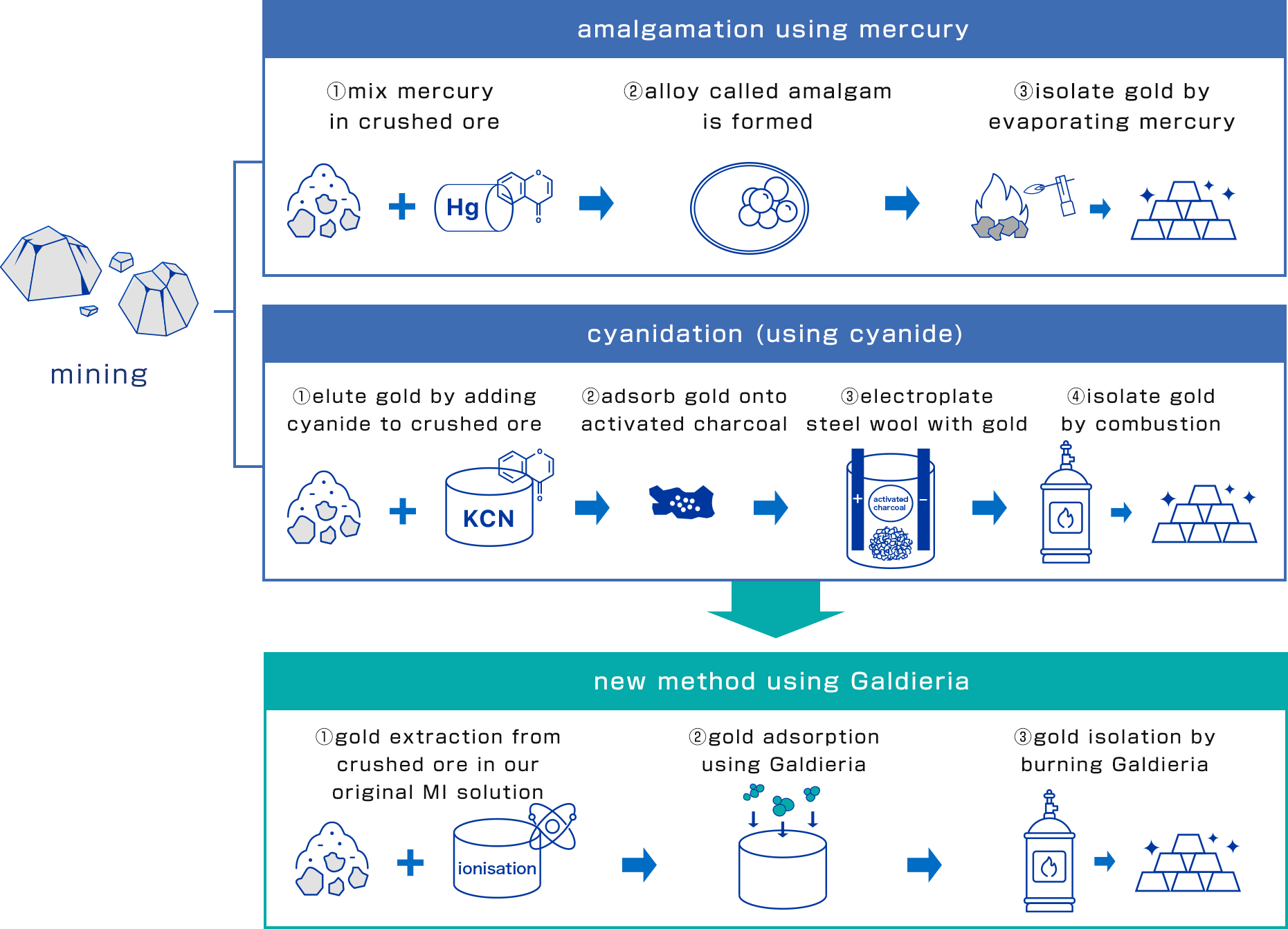
Galdieria is an extremophilic alga that inhabits hot springs, has high growth rates and is promising for various applications such as precious metal recovery, food colourant and environmental remediation.
We have the methodologies for cultivation and the ways to maximise the metal adsorption ability of a microalga called Galdieria.
Our culture facility beside our main laboratory has capacity to produce 200 kg dry weight of Galdieria in a month available for various purposes.

The produced Galdieria is mainly processed as precious metal adsorbent and used for metal recycling and gold mining in domestic and international locales.
We are developing precious metal adsorbent from dried Galdieria cells which enables faster solid-liquid separation in order to increase the ease of handling at the urban mine recycling sites.
Our metal adsorbent can recover precious metals from dilute metal solutions of less than 10 ppm even if the solution contains various base metals; isolating palladium (Pd) from a solution containing high concentrations of tin (Sn), the condition difficult for the conventional precious metal adsorbents, is possible.
In addition, our adsorbent is applicable for a wide range of pH from neutral to strongly acidic; precious metals can be recovered in highly concentrated aqua regia that is often used in the recycling processes.


Employing industrial exhaust gases as sources of CO2 and heat for autotrophic cultivation of Gardieria is a promising option to achieve “cost reduction” and “content enrichment” at the same time.
We have succeeded in mass cultivation of Gardieria through the heterotrophic batch culture system by adding the carbon source in the growth medium.
To make our adsorbent carbon-neutral, the cultivation method needs to be switched to highly efficient photosynthetic method. The development of the techniques to utilise industrial exhaust gases that are wasted and natural resources such as hot spring water is currently underway. We are also seeking the potential application of cell contents which do not contribute to metal adsorption to further reduce CO2 emission.

We are developing a complete kit for ASGM which includes metal adsorbent and gold leaching dressing (chemicals that leach gold from ore).
This method prevents operators from needing to use toxic substances such as mercury and cyanides when leaching gold from ores. Our system completes by adding our precious metal adsorbent to the ore leachate to collect gold.
This system can ensure income and health of the miners as well as the environment and the ecosystem, therefore, seems a desireble alternative for those who were forced to use mercury which has long-term negative effects on health and the environment or cyanides which produce fatal gases.
Our precious metal adsorbent is biomaterial that can easily be burned down with a small burner without emitting any toxic gases. The post-adsorption adsorbent can actually be burned as wood pellet to supply an alternative energy source to fossil resources.
